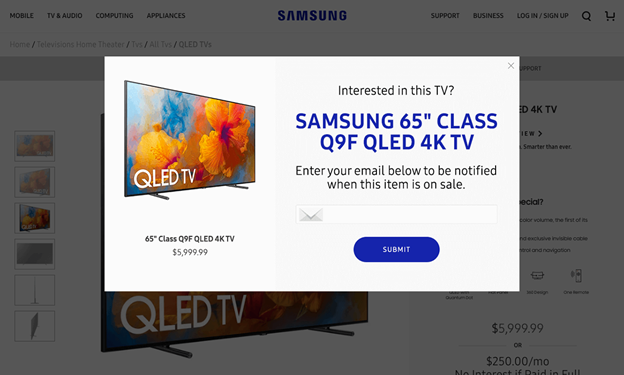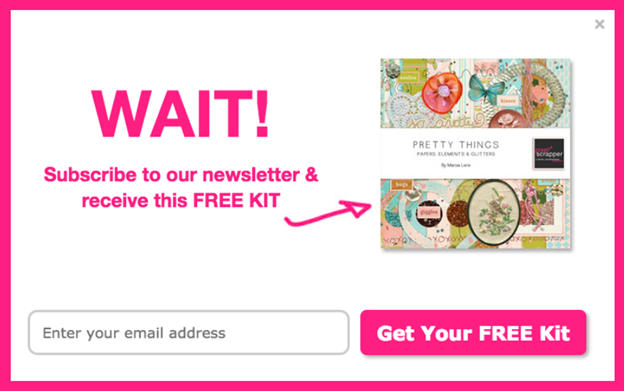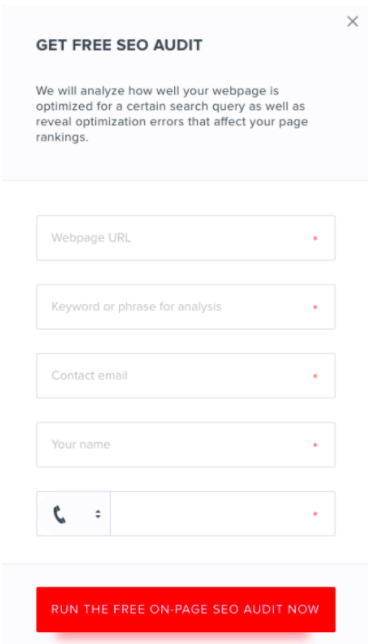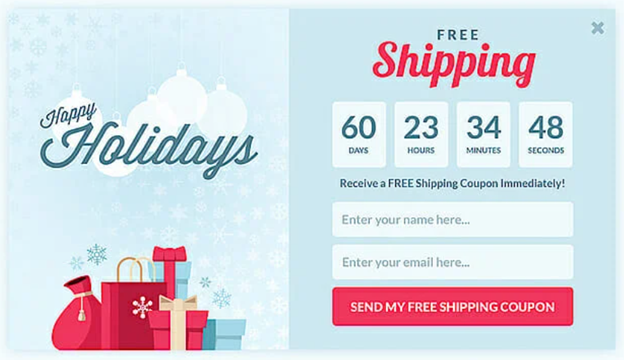Make your brand POP! Create captivating ads with the help of these tips! [Thursdays: FYO!]

There are different types of ads that can be seen across the Internet―banner ads, native ads, remarketing ads, etc.
When used and managed the right way, these ads help businesses establish their brand’s online presence and at the same time, increase leads and sales conversions.
In today’s article, we’ll be talking about another type of ad that, when properly utilized, will contribute to an increase in engagement between your target market and your brand.
A pop-up ad is a form of online advertising where a graphical user interface (GUI) display area, which is usually a small window, appears in the foreground of a website’s visual interface.
Here are some of the most commonly used pop-up ads online:
- Delayed Pop-ups. These are pop-up ads that appear after an online visitor spends a period of time on a brand’s website. These ads can appear after 5 seconds, 10 seconds, or longer depending on the length of time set by the one who manages the website.
- Pushdown and Pushup Pop-ups. Pushdowns pertain to pop-up ads that appear on top of a website and push contents down. On the other hand, pushups are the pop-up ads that slide up from the bottom of a website or on a user’s screen.
- Entry Pop-ups. These ads appear immediately once an online user visits a particular website.
- Exit Intent Pop-ups. These pop-up ads appear when a user attempts to leave a brand’s website. These are used to get the user’s attention with a brand’s last-minute deals, promos, or discounts.
- Sign-up Forms. These are ads that encourage visitors to subscribe and get free resources from a brand.
As a business owner or marketer, should you be using pop-up ads for your brand?
The answer is YES!
Here are some of the advantages of using pop-up ads:
- It has a higher view rate.
According to search marketing company WordStream, pop-up ads have a 100% view rate. This is because a pop-up shows up on obvious locations on the page and the user has to look at it to close the ad.
This type of ad is also found to be 50% more effective than banner ads in capturing the attention of your brand’s online visitors, according to web and digital marketing solutions specialist DesignPoint.
- It is customizable.
You can customize your pop-up ads according to your branding or style.
Aside from that, you can also customize these ads to improve your website visitors’ user experience (UX) by designing what they will see and what they will click.
- It contributes to an increase in conversion rates.
Online marketing agency Digital Organics’ study shows that pop-up ads are 13 times more likely to generate clicks and subscription opt-ins than standard banner ads.
When used properly, a well-designed pop-up ad to your brand’s website serves as a way to increase your followers, boost subscriber count, and market your products to users who will visit your site.
- It serves as an instant customer feedback form.
Pop-ups are another way to gather feedback from your customers. If you install a pop-up sign-up form on your brand’s website, online visitors will easily engage with you especially if they have concerns, inquiries, or complaints.
That way, you’ll be able to gauge how visitors feel about your brand and solve problems they may have faced when they visited your website.
Now that you know some advantages of using pop-up ads for your marketing plan, here are a few tips for successful pop-up advertising:
Make it “pop”
You have to consider that one of the first things users notice about your pop-up ad is not the text, but the ad’s appearance. This is why you must ensure your ad is clean, attractive, and has designs that capture users’ interests.
You may design your pop-up ads in conformity with your web design and your general branding. Another option is to design them with certain color schemes based on a particular holiday or season.
Use it in moderation
Make sure you maintain a 1:1 ratio in your pop-up ad (one ad per unique visitor). If you add a pop-up on every single page of your website, you might as well expect annoyed users to never come back to your site.
Allow users to exit
As much as you want online visitors to convert into your brand’s customers the first time they visit your site, you have to give them a way out of your pop-up ads. Some of the ways to do this is by placing an “X” button on the upper right corner of your ad, allowing the user to click outside the box, or putting a “No Thanks” button on your ad.
Keep inquiries to a minimum
Don’t ask for too much personal information from online users on your pop-up ads. Just the user’s name and email address would suffice.
An example of an e-commerce site that uses pop-up ads is American online retailer of automotive products AutoAnything.
In order to achieve its goal of gathering leads for their email list, the company decided to create a pop-up campaign that offers online users a 20% discount in their purchases in exchange for their email addresses.
Here’s what AutoAnything included in its pop-up ad:

According to lead generation software OptinMonster’s study, after setting up the ad on its website, AutoAnything recorded an increase in its daily email opt-ins by 2.5 times.
The company’s website was also viewed approximately 4 million times via desktop and more than 4.6 million views via mobile devices.
Your pop-up ads don’t have to be annoying, invasive, or distracting to catch the attention of your online visitors.
With the right approach and attractive design, this type of ad will help you appeal to your target market, increase your email list, and even increase your sales conversions.
Use pop-up ads for your brand too!
By taking note of the tips mentioned in this article, you’ll be able to use these ads in achieving your business goals.
About The Dynamic Marketing Communiqué’s
“Thursdays: FYO! Find You Optimization”
Why should you stop thinking SEO and start thinking FYO?
We’re not saying that you should abandon Search Engine Optimization (SEO).
Don’t get us wrong, of course, we know this is something very important, especially in today’s digital marketing age.
The internet landscape is vast, and a world of its own. You really need to distinguish yourself and make your brand/company/website known and easily searchable.
Better yet, get to the top of page one for Top Results on Google or any other search engine.
However, what is the purpose of SEO? It’s that customers Find You!
That’s what matters. So, while SEO is one factor of FYO… it really is only one, and we ought not to abandon all the myriad of ways digitally and offline for improving your FYO.
How can we look at this from a different and better perspective?
Let’s say you have it in the bag! You and your team are experts in SEO. Awesome. But did you ever wonder what else you could do to push it further and give your SEO skills a boost?
FYO! Find You Optimization!
You need your target audience to FIND YOU—your brand, product, service, or offer. This is SEO plus other tools that increase visibility online (and offline).
Every Thursday, we publish content on how you can get your target market to find you, beyond the typical “type and search.” There are other things you can do along with your SEO to give your online advertising process a boost.
Try considering other tactics beyond it—WOMO (Word Of Mouth Optimization), RO (Referral Optimization), and “All-Other-Means-Of-Getting-Your-Target-Market-To-Find-You” Optimization (AOMOGYTMTFY, if you’d like a long acronym).
Part of a great marketing strategy is knowing how to adapt new methods and make use of different types of marketing and promotion that best fit your business goals and which give you the results you want.
Hope you’ve found this week’s insights interesting and helpful.
Stay tuned for next Thursday’s FYO!
Cheers,
Kyle Yu
Head of Marketing
Valens Dynamic Marketing Capabilities
Powered by Valens Research
www.valens-research.com









